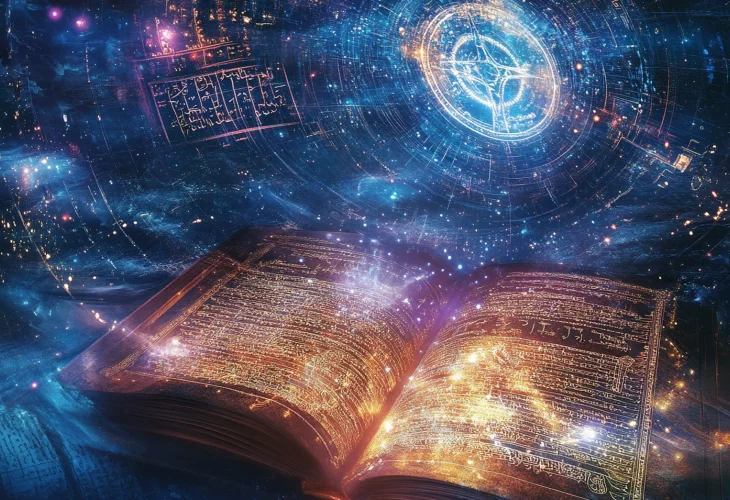In Search of God
When Science Meets Kabbalah: The Hidden Harmony Between Physics and Mysticism
From the teachings of the Ari to modern quantum theory — how Jewish mysticism continues to inspire scientists centuries later

About 270 years ago, the great Kabbalist Rabbi Moshe Chaim Luzzatto (the Ramchal) had an unusual encounter. A French philosopher visited him in Venice and pleaded with him to teach her Kabbalah. Surprised, the Ramchal asked what drew her to Jewish mysticism. To his astonishment, he discovered that she was well-versed in the writings of the Ari (Rabbi Isaac Luria).
In a letter, the Ramchal wrote: “She truly knew all the teachings of the holy Ari from beginning to end — I was astonished to hear her.”
This was not an isolated case. Throughout history, certain philosophers and scientists have found in Kabbalah profound ideas that illuminate their understanding of philosophy and science.
Mystical Parallels Across Centuries
Rabbi Shlomo Wolbe wrote about another intriguing case: “Shortly after the time of the Ari lived in Germany a mysterious shoemaker, Jakob Böhme (1575–1624), whose thought came remarkably close to the revelations of the Ari regarding the evolution of the worlds — though, of course, with many distortions.”
Such parallels have continued to appear, especially in the age of modern science.
From Quantum Physics to the Infinite
In recent years, Dr. Edward Shifrin, a physicist, published a book titled From Infinity to Man. In interviews, he described his journey: “I came from a scientific background. I wanted to believe in God, but at the time it seemed that science and Torah spoke two entirely different languages. I couldn’t believe without reconciling the two. So I began intensive research into Jewish mysticism. The deeper I studied, the more I realized that the ideas of Kabbalah resonate with modern physics, especially quantum mechanics. I understood that if I wanted to connect Kabbalah and science, I had to find a shared language between them... Kabbalah provides the deepest description of reality as a whole, while science studies a small part of that reality.”
The Holographic Universe and the Kabbalistic Vision
Researcher, Chaim Meir Shifrin, compared the ideas of the famous physicist David Bohm to concepts in the writings of the Ari and found striking similarities.
Bohm developed the theory known as “The Holographic Universe.” Since his time, various scientific discoveries — from molecular biology to neuroscience, have offered strong support for this idea.
In 2007, physicist Jacob Bekenstein demonstrated that even the seemingly strange behavior of stars aligns with the holographic model.
According to this theory, the fundamental reality of the universe is two-dimensional, and what we perceive as the third dimension is merely encoded information — processed and decoded by the human brain.
Ancient Wisdom, Modern Language
What’s truly astonishing is that these ideas were already present centuries earlier in the writings of the Ari and other Kabbalists.
Even Heisenberg’s Uncertainty Principle, a cornerstone of quantum mechanics, is described in Kabbalistic terms. The Ramchal calls it “Reisha D’lo Ityada” — “The Unknowable Head,” referring to the mysterious, unknowable aspects of divine reality that mirror the uncertainty inherent in subatomic physics.
Dr. Shifrin illustrates how within Kabbalistic teachings one can find mathematical structures and conceptual formulas that reflect the mysteries of the physical universe — though, of course, Kabbalah encompasses far more than physics.
Its insights into the fabric of existence merely hint at the boundless depth of the spiritual wisdom that unites science and soul, matter and meaning, infinity and man.

